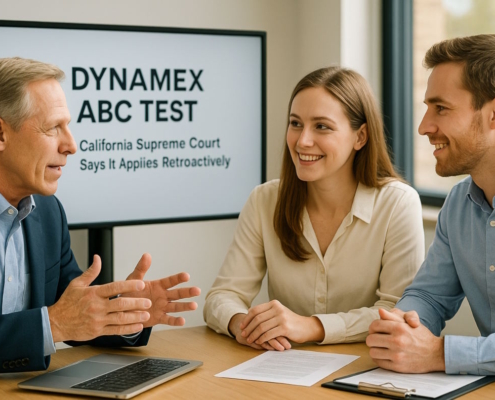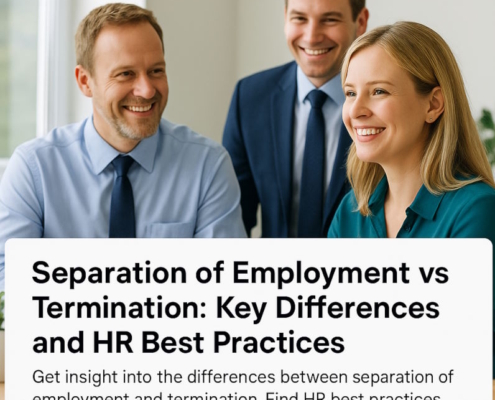What does the Borello test do?
Classification of workers is a changing and contentious issue in California. If you know about the Borello test, you might be curious about how and when to use it.
It’s reasonable to be confused. As of January 2020, when Assembly Bill 5 was passed, the 3-factor ABC test was the official method for establishing worker status. But the Borello test, which has persisted since the ’80s, is still in use today.
Businesses in California or dealing with contractors in the state should be familiar with the Borello test, its factors of consideration, and when to apply it to avoid misclassification issues.
Prior to the adoption of AB5, which codified the ABC test, the Borello test was considered the official method of worker classification in California.
The Borello test—sometimes called “The Right to Control Test”—was used by the courts, the Labor Commissioner, and the Employment Development Department of California. Among the eleven criteria used to categorize contractors are the extent to which the hiring company has influence over them, the worker’s potential for gain or loss, and the party responsible for covering the cost of their equipment.
In contrast to contractors who are required to meet all three requirements of the ABC test in order to be classified as self-employed, workers are not required to meet all eleven requirements of the Borello test.
- Does the worker have complete authority over how the job is done and what tools are used?
- When the hiring party intends to end the relationship without cause, is it necessary for them to provide prior notice?
- Does the service provider have a job or run a business that is separate from the employer’s?
- Does the worker need the employer’s constant oversight to complete the task?
- Does this job call for any specific abilities?
- Does the service provider bring all necessary equipment and materials to the job site?
- Does the person actually doing the job have the authority to hire and fire people?
- Does the worker’s assignment have a specific and temporary duration, or is it more open-ended?
- Is payment dependent on the completion of the job?
- Is the worker’s job distinct from the employer’s usual operations (i.e., is the worker not completing tasks for the employer’s clients, but jobs for the employer)?
- Are the parties under the impression that they are establishing a relationship with the hiring entity that has the characteristics of an independent contractor?
Where did the Borello test come from?
After the 1989 decision in S.G. Borello & Sons, Inc. v. Department of Industrial Relations, the Borello test became the universally accepted method for worker classification.
The legal issue at hand concerned the status of the share farmers who worked as independent contractors for Borello & Sons, Inc., where they harvested cucumbers. Certain aspects of the working relationship (such as the absence of field supervisors) corroborated the farmers’ designation as independent contractors in their signed contracts. But in the end, the Supreme Court of California determined that Borello had control over a lot of other parts of the farmers’ jobs. Hence, it was against the state’s Workers Compensation law to deny them worker’s compensation.
The decision of the California Supreme Court established the “Right to Control Test” as a means of determining whether an individual is an independent contractor. The primary goal of the evaluation is to ascertain the extent to which the employing business has the authority to dictate the specifics of the job.
Although the Borello test and the IRS 20 factor test are both still used, they are not the main ways that companies and contractors determine if someone is an independent contractor or not.
The Borello test is no longer applicable in all cases due to multiple significant legislative revisions made in the last several years.
1. The Dynamex ruling
In light of the 2018 Dynamex ruling, for instance, the California Supreme Court determined that the Borello test ought to be reserved for claims pertaining to non-wage orders (such as those involving anti-discrimination, workers’ compensation, reimbursement of business expenses, wrongful termination, waiting time penalties, non-payment of overtime, etc.).
2. AB5
With the passing of AB5 in 2020, the ABC test was codified and replaced other methods for worker classification. But it didn’t take the place of the Borello test. AB5 allowed some contractors to be exempt from the ABC test. Rather, these workers employed the Borello test. A few examples of contractors who are exempt from this rule are those who work in marketing, travel, human resources, design, grant writing, fine art, licensed esthetics, etc.
3. AB2257 and Prop 22
A revised version of AB5, known as AB2257, was signed into law by Governor Gavin Newsom of California in September 2020, eight months following the law’s passage. There was a further expansion of exemptions from the ABC test under the new law.
Freelancers in many fields can continue to operate under the umbrella of “independent contractor,” including musicians, actors, landscape architects, translators, copy editors, illustrators, real estate appraisers, home inspectors, and many more. There, the Borello test decides the worker’s status and whether or not the company has the right to control them.
Voters in California approved Proposition 22 in November 2020, expanding the lengthy list of exclusions to include app-based drivers and food delivery services. The bill’s intention to safeguard non-payroll workers is, needless to say, undermined by these exceptions.
Which workers fall under the Borello test?
Workers in the following categories are only subject to the Borello test and are not subject to the ABC test. They are, however, obligated to possess any and all licenses necessary for their respective occupations.
- Physicians, dentists, surgeons, psychologists, podiatrists, veterinarians
- Insurance brokers, premium auditors, underwriters, risk managers
- Engineers, landscape architects, and architects
- Lawyers
- Private detectives
- Accountants
- Manufactured housing salespersons
- Investment advisers and registered securities broker-dealers
- Direct salespeople (no hourly pay and written IC contracts required)
- Competition judges, including volunteer umpires and referees
- Individuals participating in an approved U.S. Department of State international exchange visitor program
Employees in the following professions may be exempt from the ABC test but subject to the Borello test:
- Keep the business location different from where the hiring company is, which could also mean their home.
- Carry not only the necessary professional licenses and permits, but also a valid business license.
- Possess complete autonomy over their work schedules and the rates they charge for their services.
- Engage in similar activities on a regular basis for another hiring firm, or provide comparable services to other prospective clients.
- Typically and consistently use one’s own discretion and judgment when providing services
Recognize when to use the Borello test
To correctly classify your employees and avoid painful misclassification audits and fines, you must know when to apply the Borello test and when to use the ABC test. It’s important to understand who doesn’t have to follow the ABC test rules and how those decisions are made.
There are frequent changes to the worker classification system in California. You can stay compliant and prevent future headaches by keeping yourself updated.































